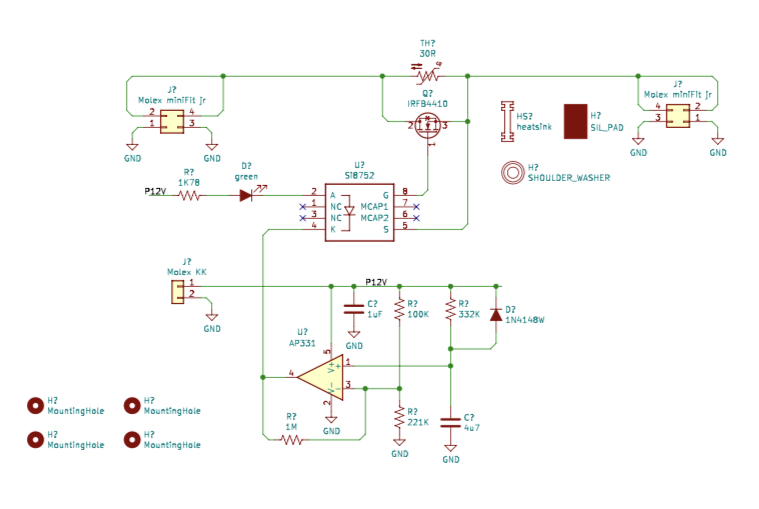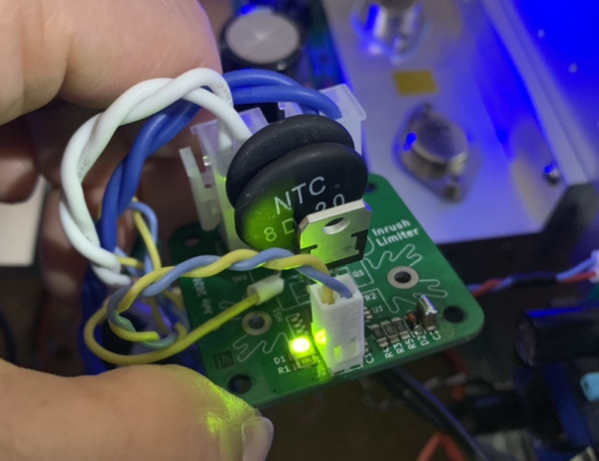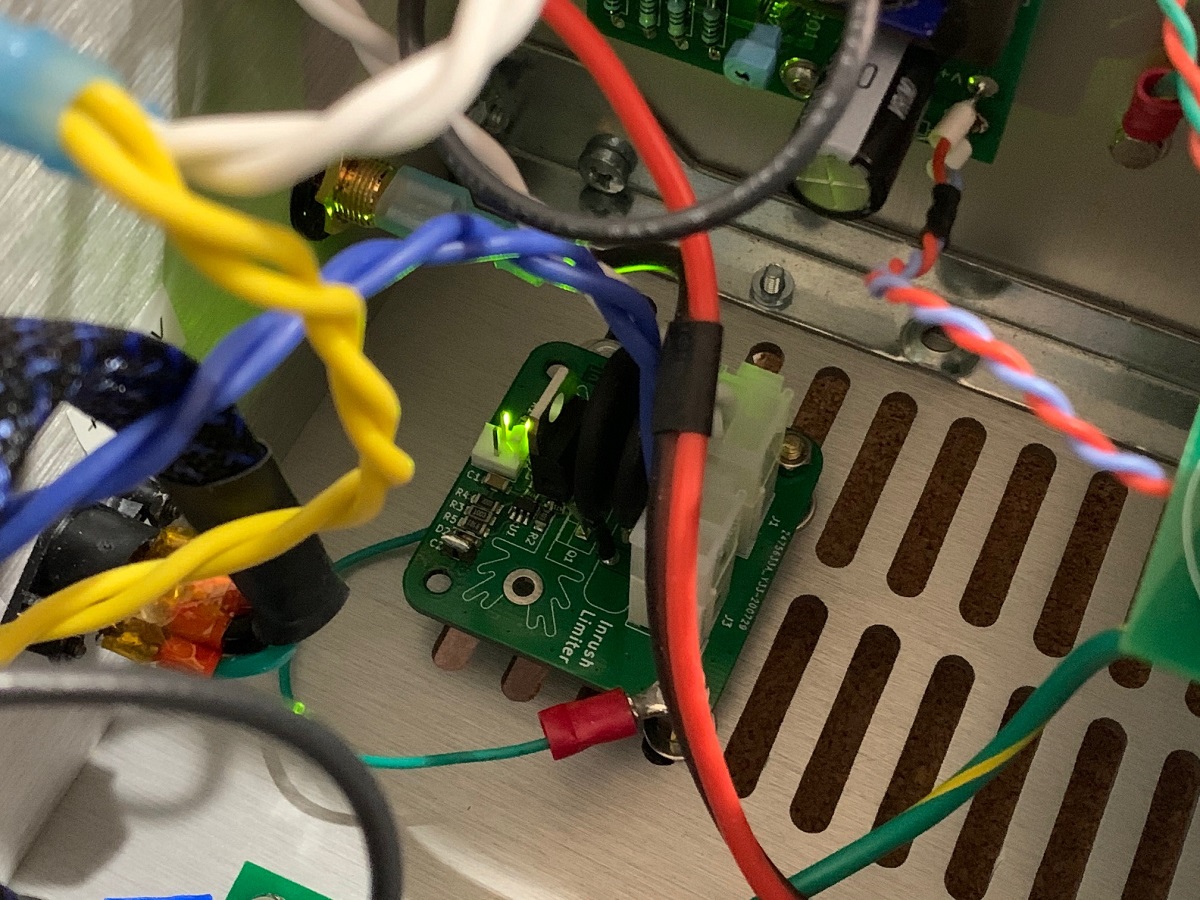I'm using version 5.1.7. I have generated several of the symbols and footprints and keep in a local library. You can PM me with specific questions if you choose.
The Gen2 RTR SSRs are in stock and ready to ship. Pricing is $55ea (folks who pre-ordered for the GB had a small discount). Units come with unpopulated bonus boards to generate the instant off disconnect to prevent speaker turn off thump.
RTR SSR Speaker Protection Gen2 | Etsy
RTR SSR Speaker Protection Gen2 | Etsy
Yes, you will need two RTR's for two channels (stereo). If you use the add-on board for controlling rapid off, only one of them is necessary by connecting the two enables on the RTR's in series and then to the current sink on the add-on.
Good thing, but very expensive. The tried and tested relay alternative is not bad. Used by many vintage amps. A good output relay does not reduce the quality.🙂
If depends on how much you value your speakers’ safety and peace of mind - I know that drivers on most higher quality speakers easily cost more than the SSR units. Sure, mechanical relays work. They also can weld themselves shut or have buildup from arcing that can degrade the signal. The convenience of how simple these are to install and compactness is one of the reasons I like the use them. They can fit inside almost any amp.
xrk971 Hello, can your product be used to disconnect power from the amplifier board (+ and -) after the capacitors, instead of disconnecting the speakers to completely exclude it from the sound path?
I am not sure I understand your question. You are looking for a way to disconnect the power DC input from the PSU to the amp and thinking of using this speaker SSR?
As a relay, I suppose it could work but as it was designed to shut off after sensing DC, that would cause it to not work. However, the same SSR mosfet topology driven by an optoisolator can be used to switch DC can work and we do that all the time. You would only need one mosfet and not a pair back to back for DC.
Here is such a circuit that Jhofland designed for a DC soft start and it can be controlled using +12v or logic on the Molex KK jack. If you want instant turn on, just make the RC time constant on the comparator fast. If you don’t need a soft start, eliminate the NTC.



In my case, I used it in a self-activated mode from its own DC that it controls to act as a soft start relay. This was used in between a SMPS and the amp (the Sony VFET).
DIY Sony VFET Builders thread
As a relay, I suppose it could work but as it was designed to shut off after sensing DC, that would cause it to not work. However, the same SSR mosfet topology driven by an optoisolator can be used to switch DC can work and we do that all the time. You would only need one mosfet and not a pair back to back for DC.
Here is such a circuit that Jhofland designed for a DC soft start and it can be controlled using +12v or logic on the Molex KK jack. If you want instant turn on, just make the RC time constant on the comparator fast. If you don’t need a soft start, eliminate the NTC.
In my case, I used it in a self-activated mode from its own DC that it controls to act as a soft start relay. This was used in between a SMPS and the amp (the Sony VFET).
DIY Sony VFET Builders thread
Last edited:
xrk971 Yes, you understood me correctly, I need your circuit to break the circuit (+ -) at the output of the power supply when a constant voltage appears at the output of the amplifier.
Hello Paroxod4,
As the designer of both the soft start and the SSR I wouldn't recommend them for the DC power switch. Something similar could, in fact, be designed. I would need to know what the supply rails are, the typical currents when on, what levels you want it to trip off and if there are any desired turn on time delays. I would expect you want it to trip off and not automatically turn on again.
As the designer of both the soft start and the SSR I wouldn't recommend them for the DC power switch. Something similar could, in fact, be designed. I would need to know what the supply rails are, the typical currents when on, what levels you want it to trip off and if there are any desired turn on time delays. I would expect you want it to trip off and not automatically turn on again.
Thank you for your answer. Many circuits, including smooth switching on of acoustics to the amplifier and protection against constant voltage at the output, are made on relays or powerful field-effect transistors, and in the event of a malfunction (constant component at the output), the speakers are disconnected from the amplifier. I think it's better that the circuit cut off the power of the amplifier and did not participate in the sound signal at all, even if it was not visible from the measurements.
Soft start is present separately for transformers (dual mono)+ - 50 Volts with a current of 8 Amperes for this circuit a lot?The main thing is to turn off, even without turning it on.
Last edited:
It depends on what you are trying to protect. If it is the speakers, then it would be preferable to disconnect them from the amplifier, As the speaker protect SSR does. If you disconnect the power source from the amplifier you still have whatever reservoir caps are present in the amplifier output stage providing undesired current to the speakers. If you also choose to disconnect the rails, that may keep the amp itself from sustained damage.
In the amplifier itself, there is only 400 microfarads per shoulder, I think this will not do anything wrong with the speaker.😉
So you would need to have a detect circuit connected to the amp output like the usual RTR SSR, but you want to disengage the +/-DC rails to the amp with a SSR. It will take two MOSFETs, one for +ve and one for -ve leg rail. It needs a latch and reset function. You would not want a feedback loop to turn the amp on / off to oscillate.
That's right. Since if something happens, then why run the circuit? You must first find out what happened, the output transistors are probably burnt out.🙂
Well this can be done but is a new circuit and would need to be designed and tested. Is there any more interest in this circuit besides Paroxod4?
I already wrote, now I have protection on the relay, and when the speakers are turned off at the output of about 1 volt, the potentiometer in the amplifier starts to reduce the constant component at the output, the relay turns on somewhere by 200 mV, maybe more, You can also consider this option, the main thing in the new the circuit to exclude something from the signal transmission at all, and to build protection in an instant power off of the amplifier. Of course, it would be nice to discuss with other participants, maybe I'm not right, criticize.

- Home
- Group Buys
- Ready-to-Run (RTR) SSR DC Speaker Protection and Delay GB